
 |
| The permanent trump suit in Schafskopf |
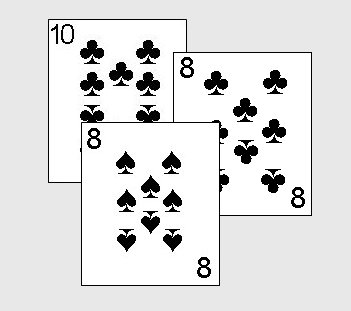
|
| As an example, the 10 of clubs being led to this trick would win it (being the highest card of the suit led) in the absence of any cards of the trump suit played to the trick. |
| Card Denomination | Point Value |
|---|---|
| Each Ace | 11 |
| Each 10 | 10 |
| Each King | 4 |
| Each Queen | 3 |
| Each Jack | 2 |
|
|
Winning the Game |
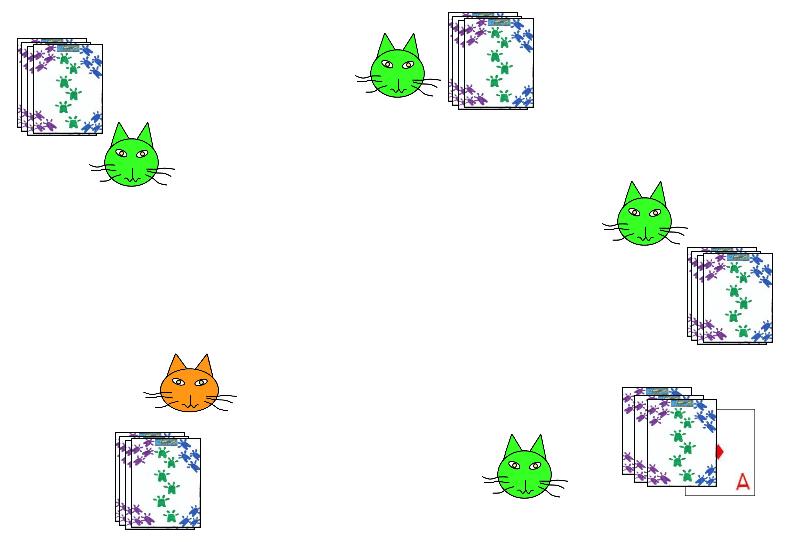 |
| In one method of determining a temporary partnership in the 5 hand game, the unknown holder of a called Ace would become the players hidden partner. |
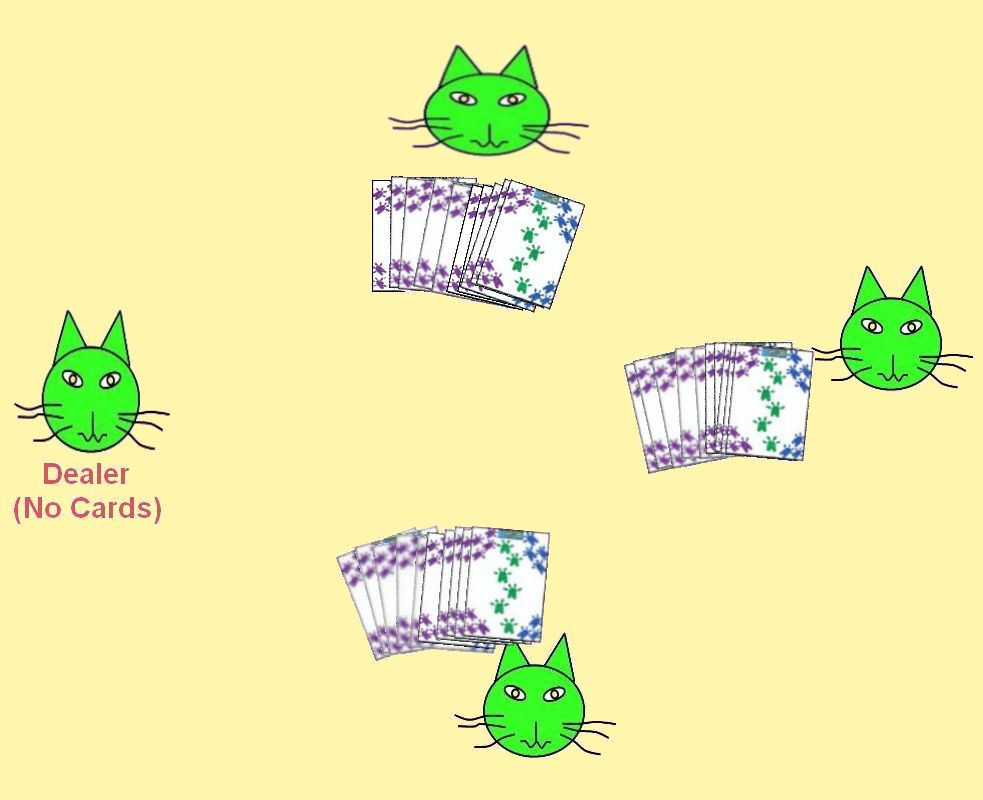 Alternate Rules for 4 and 5 players:
Alternate Rules for 4 and 5 players: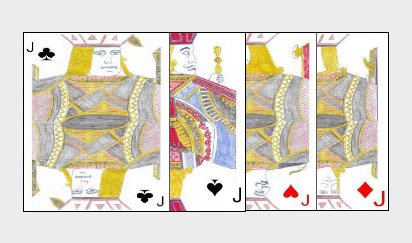 The dealer deals out packs of four cards to each player, in two rounds such that each player receives a total of 8 cards. The player to the immediate left of the dealer is entitled to make one bid or pass. Each other player, in turn is also allowed to make one bid (or pass). When bidding, a player bids the number of points, over 60 that he agrees to contract to win with the help of his partner. The winning bidder has the privilege of naming the trump. In addition to the named trump suit, the following four permanent trump cards are added to this trump suit, becoming, for all purposes actual members of this suit: Jack Clubs (♣), Jack Spades (♠), Jack Hearts (♥), Jack Diamonds (♦). Thus, the trump suit is ranked in the following order, from high to low:(Jack of Clubs, Jack of Spades, Jack of Hearts, Jack of Diamonds, Ace, 10, King, Queen, 9, 8, 7). The Ace, 10, King, Queen, 9, 8 and 7 of trump would all be of the suit that the winning bidder named as trump. The remaining, non-trump suits rank as follows from highest to lowest: Ace, 10, King, Queen, 9 , 8, 7. The player at dealers immediate left makes the lead to the first trick. Other than these differences, the rest of the rules for Auction Sheepshead are played identically to the standard game described above.
The dealer deals out packs of four cards to each player, in two rounds such that each player receives a total of 8 cards. The player to the immediate left of the dealer is entitled to make one bid or pass. Each other player, in turn is also allowed to make one bid (or pass). When bidding, a player bids the number of points, over 60 that he agrees to contract to win with the help of his partner. The winning bidder has the privilege of naming the trump. In addition to the named trump suit, the following four permanent trump cards are added to this trump suit, becoming, for all purposes actual members of this suit: Jack Clubs (♣), Jack Spades (♠), Jack Hearts (♥), Jack Diamonds (♦). Thus, the trump suit is ranked in the following order, from high to low:(Jack of Clubs, Jack of Spades, Jack of Hearts, Jack of Diamonds, Ace, 10, King, Queen, 9, 8, 7). The Ace, 10, King, Queen, 9, 8 and 7 of trump would all be of the suit that the winning bidder named as trump. The remaining, non-trump suits rank as follows from highest to lowest: Ace, 10, King, Queen, 9 , 8, 7. The player at dealers immediate left makes the lead to the first trick. Other than these differences, the rest of the rules for Auction Sheepshead are played identically to the standard game described above.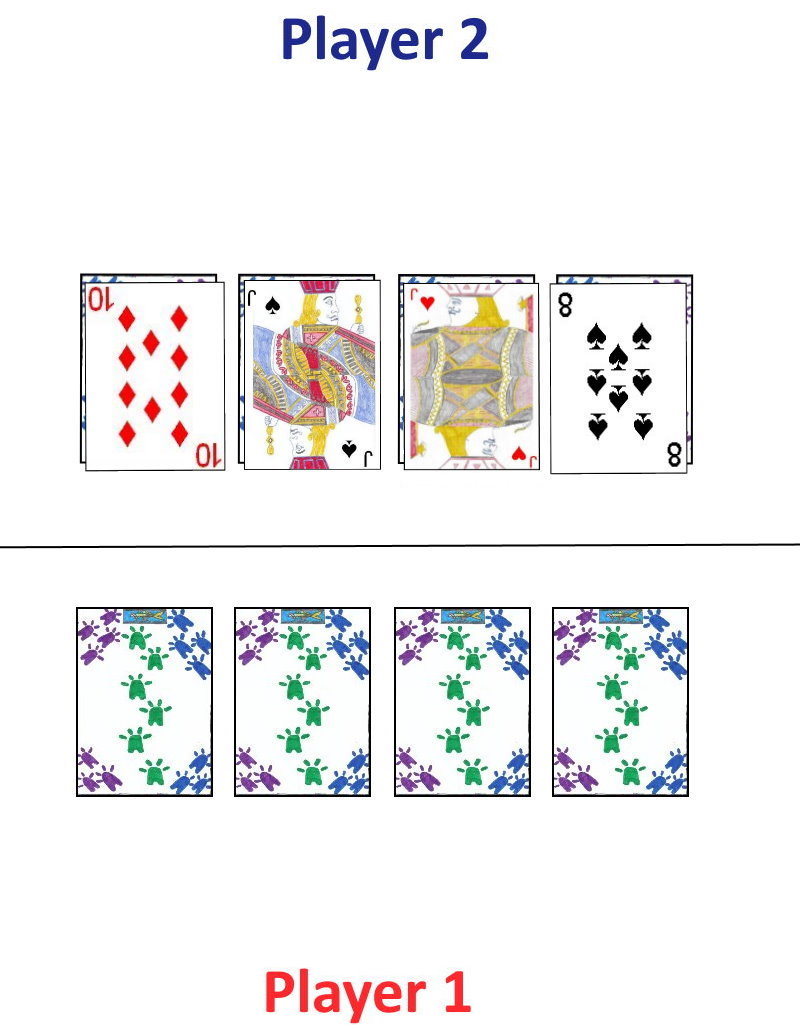
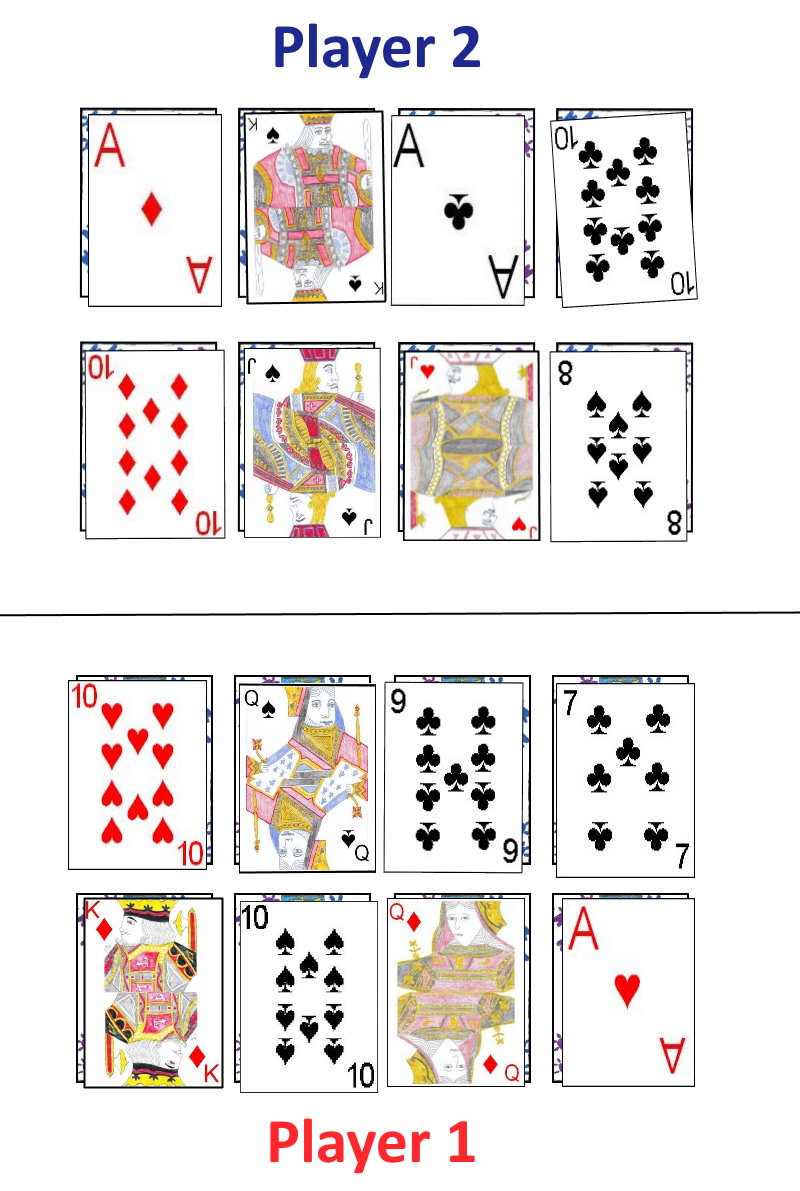 After the opponent receives these four face-up cards, this player, based on the four face-up cards in front of him, must announce a specific game or "Pass". If he elects to announce a game he may either announce "Wenz" or a
"Suit Solo". If addition to his choice of Suit Solo or Wenz, the player also names a specific suit as part of his declaration (Spades, Clubs, Diamonds or
Hearts), which then sets that suit as the trump suit for the hand. In the event of a Suit Solo "game", the ranking of the cards in the trump suit are as declared above, in the declared suit. However if the player announces a Wenz "game", the length of the permanent trump suit is reduced, with the following being the ranking of all cards making up that trump suit (from high to low); Jack Clubs (♣), Jack Spades (♠), Jack Hearts (♥), Jack Diamonds (♦), Ace (in declared trump suit), 10 (in declared trump suit), King (in declared trump suit), Queen (in declared trump suit), 9 (in declared trump suit), 8 (in declared trump suit), 7 (in declared trump suit). If the non dealer passes, the dealer must then announce a game (again either Wenz or a Suit Solo) and may not pass. This announcement is made without the dealer having yet seen any of his own cards to be received in this hand. After the game is announced by one of the players, the dealer deals four face-up cards, one on each of his own four card face-up cards.
If the non-dealer had declared a game, the dealer may also opt to call
"Double" after dealing these four face-up cards. If the dealer does
elect to double this will double the score for this hand. After this the dealer then deals another horizontal row of four face-down cards to each player and finally a row of four-face up cards to each player, covering each of the just previously dealt face-down cards of each player.
After the opponent receives these four face-up cards, this player, based on the four face-up cards in front of him, must announce a specific game or "Pass". If he elects to announce a game he may either announce "Wenz" or a
"Suit Solo". If addition to his choice of Suit Solo or Wenz, the player also names a specific suit as part of his declaration (Spades, Clubs, Diamonds or
Hearts), which then sets that suit as the trump suit for the hand. In the event of a Suit Solo "game", the ranking of the cards in the trump suit are as declared above, in the declared suit. However if the player announces a Wenz "game", the length of the permanent trump suit is reduced, with the following being the ranking of all cards making up that trump suit (from high to low); Jack Clubs (♣), Jack Spades (♠), Jack Hearts (♥), Jack Diamonds (♦), Ace (in declared trump suit), 10 (in declared trump suit), King (in declared trump suit), Queen (in declared trump suit), 9 (in declared trump suit), 8 (in declared trump suit), 7 (in declared trump suit). If the non dealer passes, the dealer must then announce a game (again either Wenz or a Suit Solo) and may not pass. This announcement is made without the dealer having yet seen any of his own cards to be received in this hand. After the game is announced by one of the players, the dealer deals four face-up cards, one on each of his own four card face-up cards.
If the non-dealer had declared a game, the dealer may also opt to call
"Double" after dealing these four face-up cards. If the dealer does
elect to double this will double the score for this hand. After this the dealer then deals another horizontal row of four face-down cards to each player and finally a row of four-face up cards to each player, covering each of the just previously dealt face-down cards of each player.
| Card Denomination | Point Value |
|---|---|
| Each Ace | 11 |
| Each 10 | 10 |
| Each King | 4 |
| Each Queen | 3 |
| Each Jack | 2 |
| Each 9, 8 or 7 | 0 |